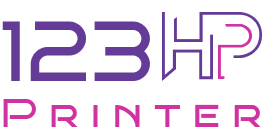Frustrating Printing Issues And Their Solutions

Slow Wi-Fi Printing: When Your Printer Takes Forever
In our fast world, waiting for a slow printer is annoying, especially if you have lots of pages to print. Large photos and presentations make it slow. Fix it by lowering print quality or sending smaller parts. Also, if your printer is far from the Wi-Fi router, it might be slow. Put it closer for faster prints. Adjust print settings for speed too.
Printer Won’t Print at Home or Office? Let’s Fix It
Your printer is not printing? First, check if it’s out of paper (yes, it happens!). If there’s paper, ensure you’re connected to the right printer. Maybe you sent the print job to the wrong one. Check for connection issues. If it’s still not working, your print driver might be messed up. Get the latest version and reinstall. If that doesn’t work, call a printer technician.
Duplex Printer Upside Down? Here’s the Quick Fix
Got a duplex printer printing the back page upside down? No worries. Choose “Print on Both Sides” and select “Flip on Long Edge.” Your prints will be right. If the pages are all mixed up, print in reverse from Advanced Settings. Use this only if you sort the pages after printing.
Extra Blank Page After Printing? Let’s Stop the Waste
Wondering why there’s an extra blank page? It’s not intentional. Your print settings might add separator pages for multiple users. If it’s just for you, change this in printer preferences. Deselect the separator pages option.
Paper Jams: A Common Printer Headache
Paper jams are annoying! They happen from static electricity or too much paper. Square off your paper stack before loading to avoid jams. Don’t overload the tray. Jams also occur with the wrong print media. Check if your printer can handle thicker or larger paper types. Adjust your PC settings to match.
Setting Up Your New Printer: A Step-by-Step Guide

Welcome to the world of hassle-free printing! Today, we’ll guide you through the simple yet crucial steps to set up your new printer, ensuring a smooth and efficient printing experience.
Step 1: Unboxing and Initial Setup
Begin by carefully removing the printer from its box. Place it on a level surface where you plan to use it. Peel off any tape, stickers, and packing materials from the printer, ensuring a clean start.
Step 2: Power Up
Connect the power cord to the rear of the printer and plug the other end into an electrical outlet. Turn on the printer and wait until it’s idle. If your printer has a touchscreen control panel, follow the on-screen prompts to select your preferred language.
Step 3: HP Smart App Integration
To smoothly connect your device to the printer, download and install the HP Smart app if you haven’t already. Open the app and follow the prompts to add and set up your printer. If you already have HP Smart installed, open it, click the plus sign, and follow the app’s instructions.
Step 4: Fill the Ink Tanks
Open the ink access door, open the tank covers, and fill the ink tanks using official bottles of HP ink. Match the colors and follow the guidelines to ensure a mess-free process. Close the ink tank caps and wait for the printer to complete ink purging and calibration.
Step 5: Install Printheads
Lift the ink access door again, press the blue button to open the printhead cover, and insert the printheads that came with your printer. Close the cover and ink access door.
Step 6: Load Paper
Load plain white paper into the input tray, adjusting the guides to fit the paper size. Ensure the stack is aligned properly, and close the input tray.
Step 7: Align Printheads
Print an Alignment page, then scan it to align the printheads. Follow the printer’s instructions for either touchscreen or non-touch screen models.


